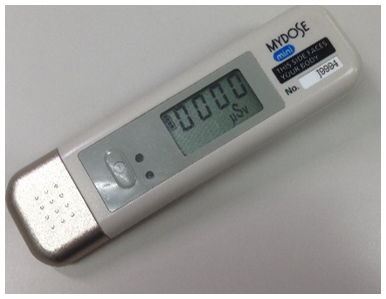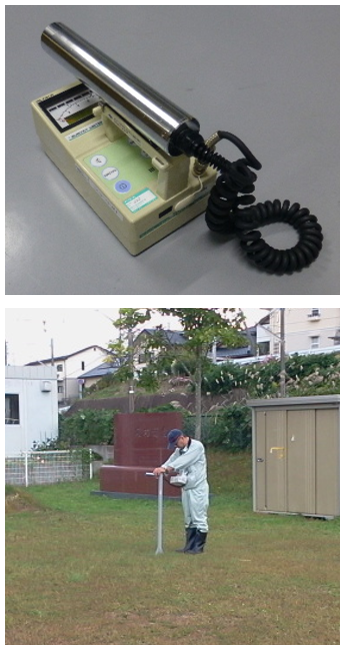Assessment of Exposure Doses and Decontamination
(2016)
QWhat methods are there for measurement and evaluation of external radiation doses? What are the characteristics of each method?
AMethods for measurement and evaluation of external doses are classified into 1) measurement by personal dosimeter, and 2) estimation based on air dose rates. These two methods both have advantages and drawbacks. Therefore, it is important to understand how the results are obtained.
1. Measurements by personal dosimeter
【Advantage】
- Data represent real radiation doses closely, because it is a measurement on the surface of the human body.
【Drawback】
- We must always carry the dosimeter, so it is bothersome.
- it is difficult to measure the evacuated area where residents will return in future.

Fig.1 Personal dosimeter
2. Estimation from air dose rates
【Advantage】
- Radiation doses can be easily evaluated by simply supposing behavior patterns of residents.
【Drawback】
- Evaluated results generally contain large errors.
- It is difficult to evaluate personal radiation dose.

Fig.2 Measurement of air dose rate with NaI survey meter
The government regards measurements by a personal dosimeter as important. But there are many cases where personal dosimeters cannot be used. Therefore, it is necessary to use appropriate methods for radiation measurement and evaluation depending on the situation.
Related articles
- In what ways does exposure to radiation occur the environment? What kinds of radiation exposures are important in Fukushima?
- Why are radiation doses measured with personal dosimeters different from those estimated using air dose rates?
- Is it possible to precisely estimate radiation doses from air dose rates?
- What were the radiation exposures just after the accident?
- What kinds of measurements and evaluations for radiation doses have been conducted until now? What are the results?
